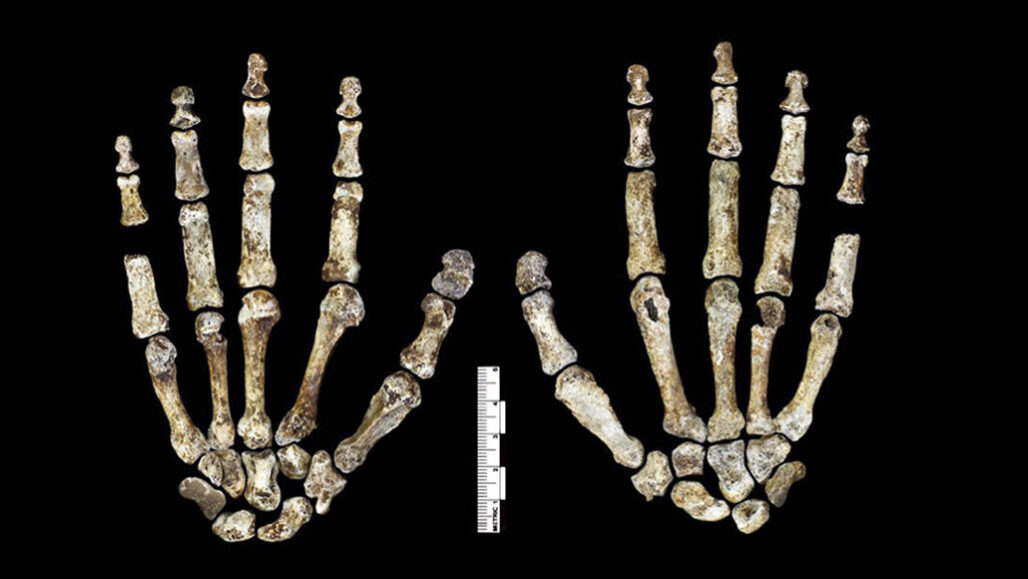Let’s learn about early humans
Other two-legged apes walked the Earth long before we did

These bones are from the hands of Homo naledi, an early hominid related to modern humans.
Lee Roger Berger research team/eLife 2015 (CC-BY-4.0)
Many modern animals have close relatives — other species that are in their same genus. House cats, for instance, belong to the same genus as the European mountain cat, the jungle cat and more. Dogs are in the same genus as coyotes and jackals. But humans? People are alone. We are the last surviving member of the genus Homo.
We weren’t always alone. Our family, the hominids, included other primates that walked the Earth on two legs. Some of them were our ancestors. We know them from the fossils, footprints and tools they left behind.
One famous hominid fossil goes by the name “Lucy.” This member of Australopithecus afarensis walked upright 3.2 million years ago in what is now Ethiopia. A closer relative to modern humans, Homo naledi, might have roamed South Africa at the same time as members of our own species. Another famous relative — Homo neanderthalensis, or Neandertals — lived alongside modern humans. Neandertals used medicine and tools just as humans of the time did.
Over time, though, these other species died out. Modern humans spread all over the world, from our first home in Africa to Australia and the Americas. Now, Homo sapiens is all that’s left of our family tree.

Educators and Parents, Sign Up for The Cheat Sheet
Weekly updates to help you use Science News Explores in the learning environment
Thank you for signing up!
There was a problem signing you up.
Want to know more? We’ve got some stories to get you started:
‘Cousin’ Lucy may have fallen from a tree to her death 3.2 million years ago: A contested study suggests that Lucy, a famous fossil ancestor of humans, fell from a tree to her death. (8/30/2016) Readability: 7.4
This hominid may have shared Earth with humans: Newfound fossils in South Africa point to a far more recent age for Homo naledi than had been accepted. If correct, this hominid might have coexisted with humans — even interacted with our species. (5/10/2017) Readability: 7.8
This cave hosted the oldest known human remains in Europe: Bone fragments, tools and other finds in Bulgaria suggest that Homo sapiens moved rapidly into Eurasia as early as 46,000 years ago. (6/12/2020) Readability: 7.2
Explore more
Cool Jobs: Drilling into the secrets of teeth
DNA reveals clues to the Siberian ancestors of the first Americans
Neandertals: Ancient Stone Age builders had tech skills
Ancient footprints surface in Britain
Fossils hint ancient humans passed through a green Arabia
Be a detective in an early human crime scene. An interactive from the Smithsonian National Museum of Natural History offers close looks at ancient bones to show how early humans ate — and got eaten.







